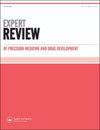个性化医学靶向治疗时代病理学家角色的转变
IF 1.2
Q4 PHARMACOLOGY & PHARMACY
Expert Review of Precision Medicine and Drug Development
Pub Date : 2021-05-11
DOI:10.1080/23808993.2021.1923400
引用次数: 3
摘要
长期以来,病理学家主要致力于形态学诊断,包括器官和组织的宏观和微观检查。此外,临床医生和病理学家之间的互动仅限于病理学家提供的形态学诊断报告。最近,由于技术进步、细胞和分子途径的最新发现、医学领域日益细分以及肿瘤治疗个性化的需要,医学发生了巨大变化。事实上,由于一种越来越个性化的治疗方法的发展,即“伴随诊断”,专门分析能够预测患者对靶向治疗反应的肿瘤标志物[1]。因此,虽然以前的诊断病理学方法是用来定义预后生物标志物的,但目前病理学家需要确定有助于预测患者对靶药物潜在反应的生物标志物[2]。由于这个原因,疾病的分类,特别是肿瘤,丰富了免疫组织化学和分子特征。在这种情况下,病理学家已经超越了形态学诊断,明确进入患者的临床管理,并领导治疗方案。事实上,病理学家与分子生物学家的协同合作可以为完整的诊断提供必要的分子信息。因此,病理学家成为复杂诊断过程的最终证明者,是具有将形态学和分子信息整合到报告中所需技能的医学专业人员,包括诊断和预测性生物标志物。这些综合信息使临床医生能够为个体患者选择最佳治疗程序(例如化疗或免疫疗法或基因治疗)[3]。本文章由计算机程序翻译,如有差异,请以英文原文为准。
The changing role of the pathologist in the era of targeted therapy in personalized medicine
For a long time, the pathologist has mainly been dedicated to the morphological diagnosis, including macroscopic and microscopic examination of organs and tissues. Moreover, interaction between clinicians and pathologists was limited to the morphological diagnostic reports provided by pathologists. Recently, medical science has dramatically changed due to technological progress, recent discoveries in cellular and molecular pathways, the growing sub-specialization in the medical fields, the need to individualize oncological therapies. Indeed, due to the development of an increasingly individualbased therapy, the ‘companion diagnostic,’ specifically analyzing tumor markers able to predict the response of the patients to targeted therapies [1]. Thus, while the previous approach in diagnostic pathology were addressed to define prognostic biomarkers, currently the pathologists are required to identify biomarkers useful to predict patient’s potential response to target drugs [2]. For this reasons, classifications of the diseases, particularly neoplasms, enriched of immunohistochemical and molecular features. In this scenario, the pathologist has gone beyond the morphological diagnosis, definitively entering the patients’ clinical management, and leading the therapeutic addresses. Indeed, pathologists in a synergic collaboration with molecular biologists can provide necessary molecular information useful for a complete diagnosis. Therefore, pathologists become the final certifier of a complex diagnostic process, being medical professionals with the required skills to integrate morphological and molecular information in a report, including diagnosis and predictive biomarkers. This integrated information allows clinicians to choose the best therapeutic procedure for the individual patient (e.g. chemotherapy or immunotherapy or gene therapy) [3].
求助全文
通过发布文献求助,成功后即可免费获取论文全文。
去求助
来源期刊

Expert Review of Precision Medicine and Drug Development
PHARMACOLOGY & PHARMACY-
CiteScore
2.30
自引率
0.00%
发文量
9
期刊介绍:
Expert Review of Precision Medicine and Drug Development publishes primarily review articles covering the development and clinical application of medicine to be used in a personalized therapy setting; in addition, the journal also publishes original research and commentary-style articles. In an era where medicine is recognizing that a one-size-fits-all approach is not always appropriate, it has become necessary to identify patients responsive to treatments and treat patient populations using a tailored approach. Areas covered include: Development and application of drugs targeted to specific genotypes and populations, as well as advanced diagnostic technologies and significant biomarkers that aid in this. Clinical trials and case studies within personalized therapy and drug development. Screening, prediction and prevention of disease, prediction of adverse events, treatment monitoring, effects of metabolomics and microbiomics on treatment. Secondary population research, genome-wide association studies, disease–gene association studies, personal genome technologies. Ethical and cost–benefit issues, the impact to healthcare and business infrastructure, and regulatory issues.
 求助内容:
求助内容: 应助结果提醒方式:
应助结果提醒方式:


